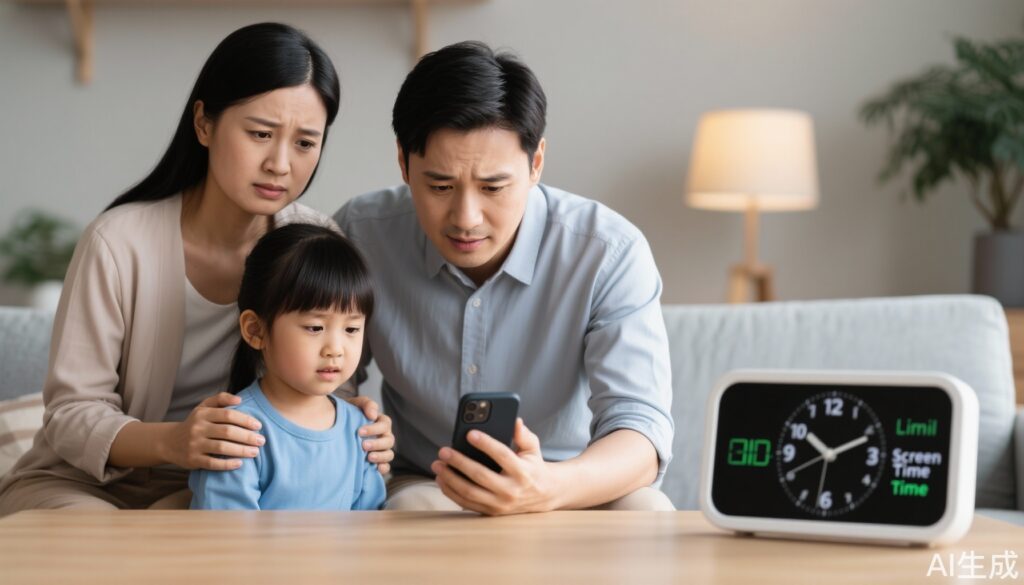Introduction: Addressing the Smartphone Epidemic in Japan
In a world increasingly dominated by digital technology, smartphone usage has become a double-edged sword. While enabling productivity, communication, and learning, excessive use, especially among children and adolescents, raises concerns about physical and mental health. Recently, Aichi Prefecture’s Toyoake City in Japan proposed a groundbreaking regulation known as the “Smartphone Use Promotion Ordinance (Draft)” to curb daily smartphone and tablet use to no more than two hours outside of work or study. For minors under 18 years old, the restrictions are even stricter, prohibiting smartphone use after 10 p.m. This initiative was driven by documented cases within Toyoake where children increasingly showed reluctance to attend school due to smartphone addiction. This article explores the scientific evidence supporting this regulation, the impact of screen time on eye health, and practical recommendations for healthy digital habits.
Scientific Evidence: The Strain of Screen Time on Eye Health
Long smartphone sessions are not just distractions from study; they significantly affect eye physiology. A 2025 study published in the “Journal of Eye Movement Research” highlighted that just one hour of scrolling through social media triggered significant digital visual fatigue among young users. Symptoms included blurred vision, double vision, and eye tearing, all classic signs of eye strain.
To delve deeper, a team of researchers in India recruited 30 young adults to investigate the ocular effects of prolonged smartphone use. They employed a sophisticated portable eye-monitoring system equipped with infrared cameras capable of real-time tracking of key ocular parameters such as blink rate, pupil diameter, and inter-blink interval. These metrics allowed precise assessment of eye fatigue levels.
Participants engaged in three separate one-hour smartphone tasks at a fixed viewing distance using a Realme 6 Pro device: reading e-books, watching videos, and browsing social media short videos. Analysis revealed that social media browsing caused the most intense eye fatigue. The continuous changes in content and luminance during social media use elicited more pronounced fluctuations in pupil dilation compared to more consistent content like e-books or video watching.
Moreover, after just one hour of smartphone use, participants’ blink rates dropped by 54-61%, and the time between blinks increased by 39-42%. Since blinking lubricates and protects the eye, these changes indicate increased eye dryness and fatigue. Notably, this study’s focus on a longer exposure period (one hour) better reflects real-world usage patterns than previous short-term studies lasting only a few minutes.
Understanding the Impacts: More Than Just Eye Strain
Beyond eye strain, prolonged smartphone usage poses broader health concerns. For children and teenagers, excessive screen time correlates with disrupted sleep patterns, reduced physical activity, and challenges in attention and academic performance. In Toyoake City, these issues have culminated in school refusal linked to smartphone addiction, prompting urgent policy interventions.
Similar measures have been initiated elsewhere in Japan. Kagawa Prefecture introduced a comparable ordinance in 2020, urging parents to limit weekday gaming time for minors to one hour daily and 90 minutes on weekends, with time restrictions on smartphone use after 9 p.m. for junior high students and after 10 p.m. for high school students.
Practical Recommendations for Healthy Smartphone Use
Experts emphasize moderation and structured smartphone usage to mitigate adverse health effects. Recommendations include:
– Limiting non-essential screen time to under two hours daily for adults and under one hour for children on weekdays.
– Avoiding smartphone use at least one hour before bedtime to ensure healthy sleep cycles.
– Encouraging regular breaks using the 20-20-20 rule: every 20 minutes, look at something 20 feet away for 20 seconds to reduce eye strain.
– Increasing awareness among parents and guardians to establish clear household rules on digital device usage and monitor adherence.
– Implementing ergonomic practices, such as maintaining appropriate viewing distance and ambient lighting.
Expert Insights: Building a Digital Culture That Supports Eye and Mental Health
Dr. Emily Chen, a pediatric ophthalmologist, comments, “This ordinance reflects an important societal acknowledgment—screen time is a modifiable risk factor for eye health and psychological well-being. Early intervention through policy and education can prevent a generation from succumbing to digital fatigue and its complications.”
Public health officials endorse combining regulation with community education and parental engagement to foster healthier digital habits and mitigate the potential long-term burden on healthcare systems.
Case Scenario: John’s Experience with Digital Eye Strain
John, a 15-year-old high school student, had been spending upwards of four hours on his smartphone daily, primarily on social media platforms. Gradually, he developed symptoms of eye discomfort, including dryness, blurred vision, and headaches. His academic performance began to decline as he found it difficult to sustain concentration.
After his parents implemented screen time limits inspired by local guidelines and encouraged breaks during usage, John’s symptoms markedly improved within weeks. He also incorporated outdoor activities into his routine, further benefiting his physical and mental health.
John’s story illustrates the tangible benefits of regulated digital consumption, supporting both eye health and overall well-being.
Conclusion: Toward Balanced and Healthier Screen Engagement
Japan’s Toyoake City’s proposed smartphone usage ordinance marks a proactive step addressing the rising public health concern of digital eye strain and behavioral issues linked to excessive screen time. Scientific research underlines the physiological impacts of prolonged smartphone use, especially of dynamic social media content, in inducing eye fatigue.
Adopting moderate screen time, setting structured usage rules, and applying straightforward practices such as the 20-20-20 rule serve as practical measures to protect our eyes. Embracing such policies and parental guidance can safeguard the visual and mental health of current and future generations.
Ongoing research should focus on long-term impacts, effective interventions, and the balance between technological benefits and health risks.
References
1. “Effects of Smartphone Use on Eye Movement and Blink Rate: A Study Using Infrared Monitoring,” Journal of Eye Movement Research, 2025.
2. Japan Ministry of Health, Labour and Welfare. “Guidelines on Children’s Screen Time and Digital Device Usage,” 2023.
3. Kagawa Prefecture Public Health Department. “Ordinance on Smartphone Use and Gaming Time for Minors,” 2020.
4. Sheppard AL, Wolffsohn JS. Digital Eye Strain: Prevalence, Measurement and Amelioration. BMJ Open Ophthalmology, 2018;3(1):e000146.
5. Rosenfield M. Computer Vision Syndrome: A Review of Ocular Causes and Potential Treatments. Ophthalmic & Physiological Optics, 2016;36(5):453-464.



